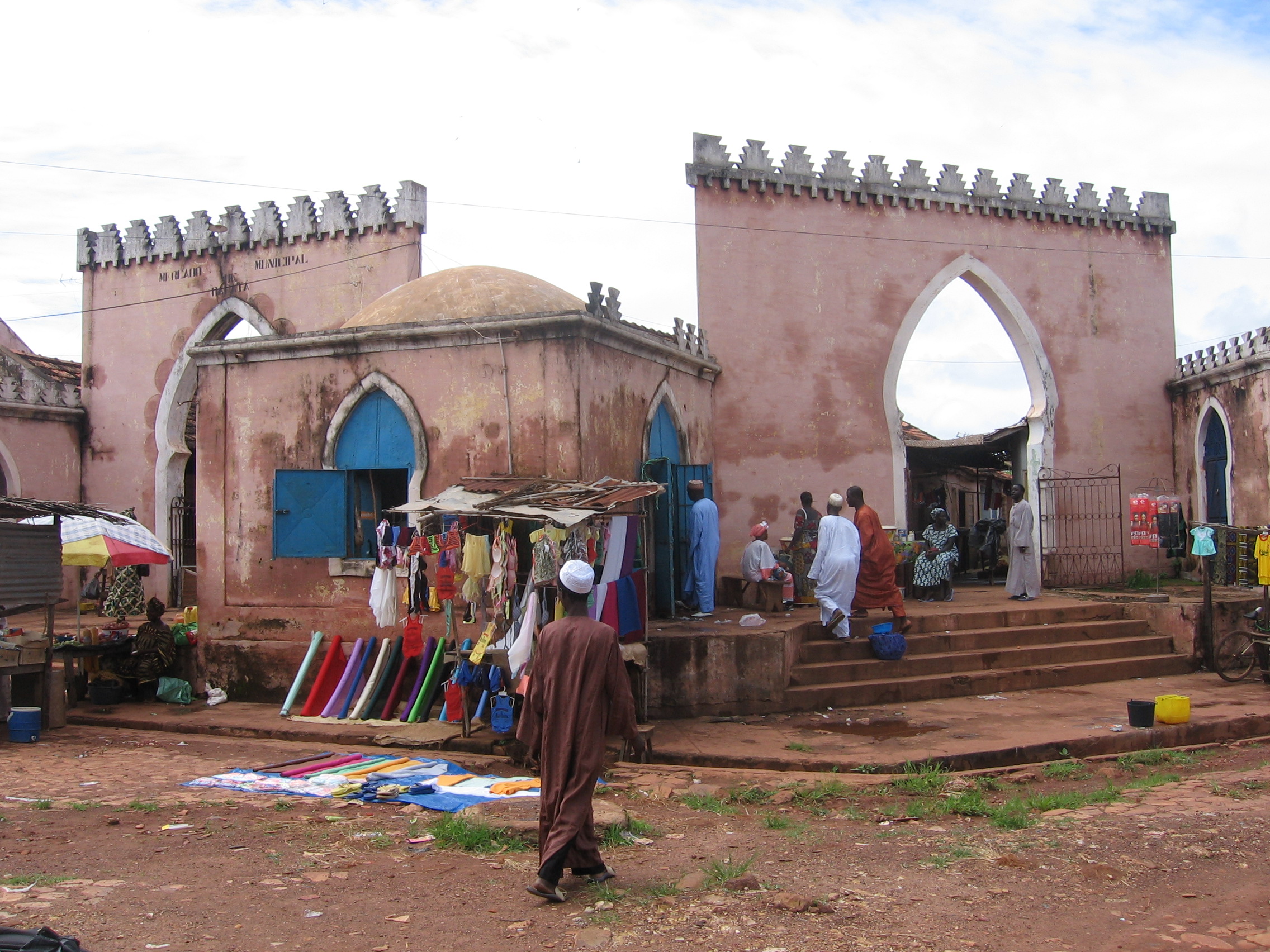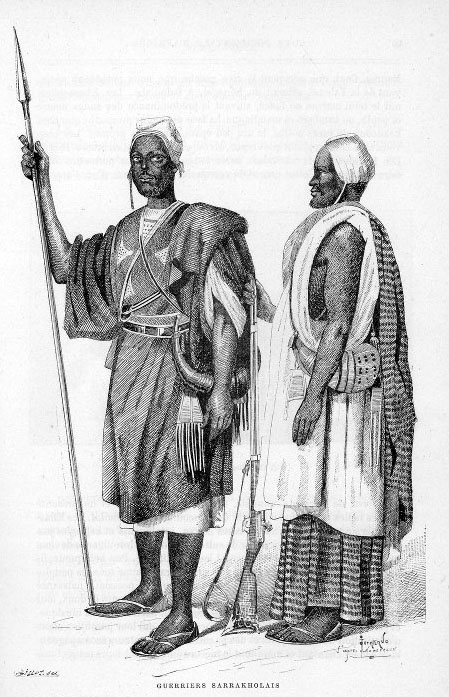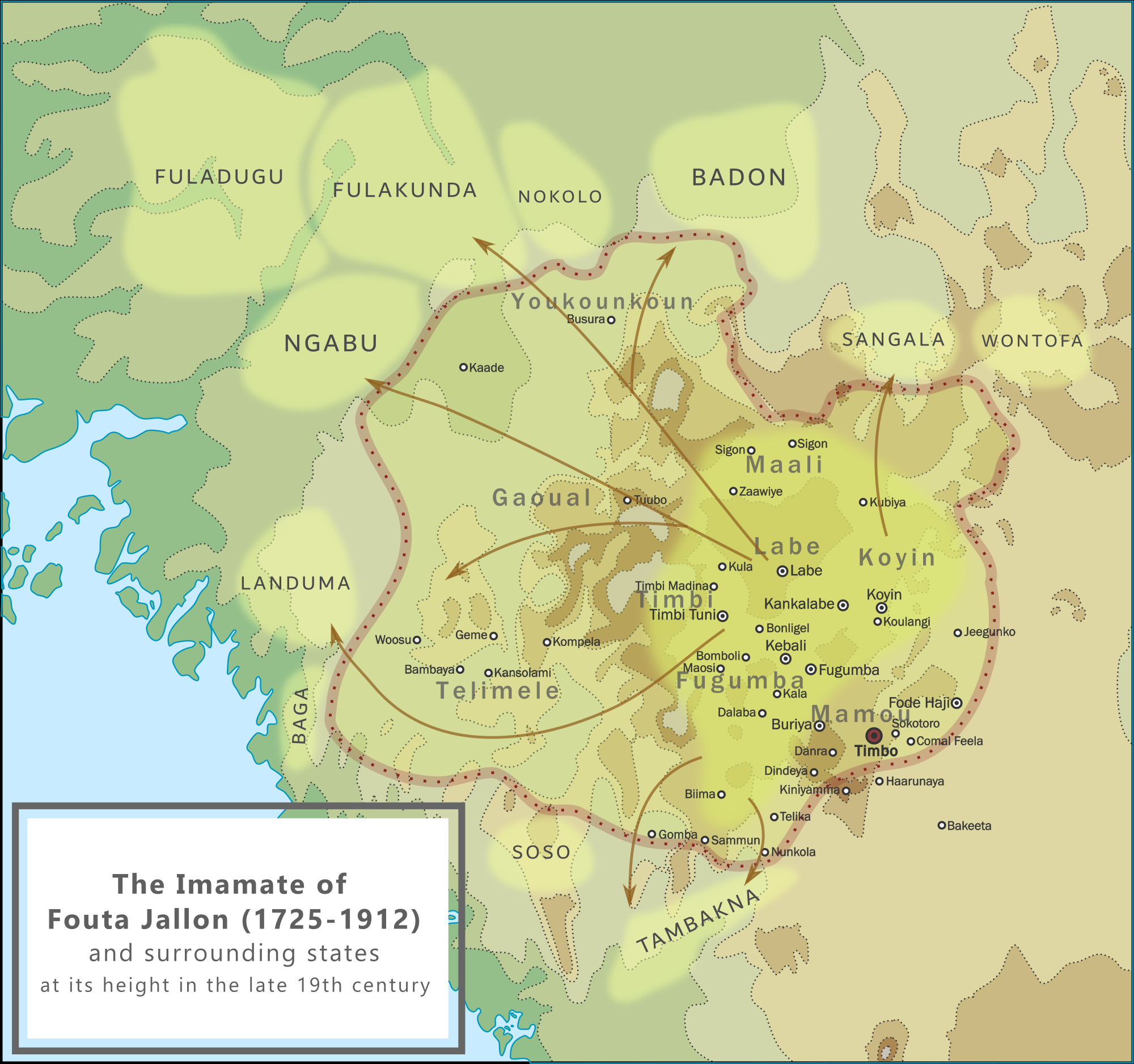|
Religion In Guinea-Bissau
Religion in Guinea-Bissau is diverse, with no particular religion comprising an absolute majority of the population. Islam is the most widely professed faith, and significant populations of Christians and adherents of traditional African religions are also present in the country. The CIA World Factbook (2020 estimate) states that around 46.1% of the population are Muslims, 30.6% adhere to traditional faiths, 18.9% are Christians, and 4.4% are non-religious or practice other religions. Meanwhile, the US State Department mentions that estimates vary greatly and cites the Pew Forum data (2020) of 46% Muslim, 31% indigenous religious practices, and 19% Christian. Christians are mostly found along the coastal regions, and belong to the Roman Catholic Church (including Portuguese Bissau-Guineans) and various Protestant denominations. In 2017, Sunni Islam, including that of Sufi-oriented, were most concentrated in the northern and northeastern parts of the country, while practitioners ... [...More Info...] [...Related Items...] OR: [Wikipedia] [Google] [Baidu] |
Soninke People
The Soninke (Sarakolleh) people are a West African Mande languages, Mande-speaking ethnic group found in Mali, southern Mauritania, eastern Senegal, The Gambia, and Guinea (especially Fouta Djallon). They speak the Soninke language, also called the Serakhulle or Azer language, which is one of the Mande languages. Soninke people were the founders of the ancient Ghana Empire, empire of Ghana or Wagadou c. 200–1240 CE, Subgroups of Soninke include the Jakhanke, Maraka and Soninke Wangara, Wangara. When the Ghana empire was destroyed, the resulting diaspora brought Soninkes to Mali, Mauritania, Senegal, Gambia, Burkina Faso, Côte d'Ivoire, Guinée-Conakry, modern-day Republic of Ghana, Kano in Nigeria, and Guinea-Bissau where some of this trading diaspora was called Wangara, leading to the saying “when Americans landed on the moon, a Soninke was already there” in Senegal, with other versions across West Africa. Predominantly Muslims, the Soninke were one of the early ethnic gr ... [...More Info...] [...Related Items...] OR: [Wikipedia] [Google] [Baidu] |
Islam In Guinea-Bissau
The CIA World Factbook (2020 estimate) states that around 46.1% of the population are Muslims, 30.6% adhere to traditional faiths, 18.9% are Christians, and 4.4% are non-religious or practice other religions. Meanwhile, the US State Department mentions that estimates vary greatly and cites the Pew Forum data (2020) of 46% Muslim, 31% indigenous religious practices, and 19% Christian. Christians are mostly found along the coastal regions, and belong to the Roman Catholic Church (including Portuguese Bissau-Guineans) and various Protestant denominations. In 2017, Sunni Islam, including that of Sufi-oriented, were most concentrated in the northern and northeastern parts of the country, while practitioners of traditional indigenous religious beliefs generally live in all but the northern parts of the country. The vast majority of Muslims in the country are Sunni of Maliki school of jurisprudence, with Sufi influences. Sizeable communities of Ahmadiyya Muslims also exist in some urban ... [...More Info...] [...Related Items...] OR: [Wikipedia] [Google] [Baidu] |
Christianity In Guinea-Bissau
Christianity is the third largest religion in Guinea-Bissau, constituting approximately 19% of the country's population according to a comprehensive 2020 study and report by the PEW. Various missionary groups operate freely throughout the nation. Christians are present throughout the country but most heavily concentrated in Bissau and western regions.International Religious Freedom Report 2007: Guinea-Bissau United States Bureau of Democracy, Human Rights and Labor (September 14, 2007). ''This article incorporates text from this source, which is in the |
Balanta People
The Balanta ( Guinea-Bissau Creole and Portuguese: ''balanta''; ; lit. “those who resist” in Mandinka) are an ethnic group found in Guinea-Bissau, Guinea, Senegal, Cape Verde and The Gambia. They are the second largest ethnic group of Guinea-Bissau, representing around a quarter of the population. Despite their numbers, they have remained outside the colonial and postcolonial state because of their social organisation. The Balanta can be divided into six dialects: Nyacra, Ganja (Mane), Naga, Patch, Sofar and Kentohe. The largest of which are the Balanta Kentohe. The Balantas mainly get their last names from the name that is given to a clan, for example. "Na Sanyang", meaning, "house of Sanyang" – which points to a clan. Normally, in a Balanta society, houses are built based on clans. Normally, the Balantas name their children depending on the circumstances, situations and conditions they are in. For example, a child could be named as "Yabna", which means "rest"; "Alá ... [...More Info...] [...Related Items...] OR: [Wikipedia] [Google] [Baidu] |
Manjak People
Manjak people or the Manjaco ( Manjak: Manjaku; French: Mandjak; Portuguese: Manjaco; Wolof: Njaago; Jola: Manjago) are a West African ethnic group who primarily reside in Guinea-Bissau with smaller communities in The Gambia, and Senegal. The Manjaco constitute about 14% of the population of Guinea-Bissau. Within Guinea-Bissau, the people primarily live in the Bassarel and Babok areas in the northern coastal Cacheu Region. Language The Manjak language is classified as part of the Bak languages, which is a branch of Niger–Congo. History Pre-colonization Based on early Portuguese records and observations, the Manjaco power structure and society was robust and well established. The people lived in a semi-feudal system where villages were under the subjugation of a leader and that leader reported to the king of the Bassarel and Babok areas, referred to as the King of Bassarel. The king of Bassarel presided over a federation of areas some of which were more prosperous ... [...More Info...] [...Related Items...] OR: [Wikipedia] [Google] [Baidu] |
Papel People
Papels, also known as Moium, Oium, Papei, Pepel or Pelels, are an ethnic group primarily located in Guinea-Bissau, though are also found in Casamance (Senegal) and Guinea. Their population in Guinea-Bissau is about 183,000, with 9,000 living outside of the country. They traditionally engaged in hunting and agriculture. History Origins According to oral history, a man named Mecau, the son of a king from the Kingdom of Quinara on the south of the river Geba, arrived at Bissau on one of his hunting trips. He opted to reside there due to its fertile soil and established a kingdom. From Quinara he brought his pregnant sister Punguenhum and his six wives: Intende, Djokom, Mala, Intsoma, Kliker and Intchipolo. Mecau invited other subjects from his father's kingdom to settle the area of Bissau alongside him. From his sister and six wives seven main Papel clans arose. * The N'nssassun (plural, bossassun) clan comes from the line of Punguenhum. This line inherited commandership ... [...More Info...] [...Related Items...] OR: [Wikipedia] [Google] [Baidu] |
Koli Tenguella
Koli Tenguella (also referred to as Koli Tenguella Bâ/Bah, Koli Tengella Jaaje Baa and Koli Pullo) (r. 1512–1537) was a Fulani warrior and leader who was pivotal in establishing the Empire of Great Fulo. Family Koli was the son of Tenguella, who led a regional conflict against the Mali Empire and Songhai Empire. His mother, Nana Keita, is said in traditional histories to be descended from Sundiata Keita. In Futa Jallon Tenguella raised the Fula, who lived all across the region, against the existing empires. As part of this effort, he sent Koli south to raise the Fula of Fuladu, Beledougou, Birgo and Wassoulou in revolt against Mali. This main thrust was defeated, however, and he fell back to the Futa Jallon. His forces settled there in a region known as Dena, sometimes called Bajar in oral histories. According to local legend Koli himself lived in a large cave known as Gueme Sangan, but his power base was Labe. They reinforced the two-centuries old Fula presence at t ... [...More Info...] [...Related Items...] OR: [Wikipedia] [Google] [Baidu] |
El Hadj Umar Tall
Hadji Oumarûl Foutiyou Tall (ʿUmar ibn Saʿīd al-Fūtī Ṭaʿl, , – 1864 CE), born in Futa Tooro, present-day Senegal, was a Senegalese Tijani sufi Toucouleur Islamic scholar and military commander who founded the short-lived Toucouleur Empire, which encompassed much of what is now Senegal, Mauritania, Guinea and Mali. Lapidus, Ira M. (2014) ''A History of Islamic Societies''. 3rd ed., New York: Cambridge University Press, pp. 472–473. Name Omar Tall’s name is spelt variously: in particular, his first name is commonly transliterated in French as ''Omar'', although some sources prefer ''Umar''; the patronymic, ''ibn Saʿīd'', is often omitted; and the final element of his name, ''Tall'' (), is spelt variously as ''Tall'', ''Taal'' or ''Tal''. The honorific ''El Hadj'' (also ''al-Hajj'' or ''el-Hadj''), reserved for a Muslim who has successfully made the Hajj to Mecca, precedes Omar Tall's name in many texts, especially those in Arabic. Later he also took on th ... [...More Info...] [...Related Items...] OR: [Wikipedia] [Google] [Baidu] |
Ibrahim Sori
Ibrahima Sori Barry Mawdo or Ibrahim Sori (died c. 1784) was a Fula leader of the Imamate of Futa Jallon in what is now Guinea in West Africa from around 1751 to 1784. Background In the second half of the 18th century a militant Islamic movement began in the Sudan region to the south of the Sahara, stretching from the Senegal to the Nile. The leaders waged ''jihad'', or holy war, against pagans and less strict Muslims, establishing a string of strictly Muslim states across the region. The first ''jihad'' was launched in Fouta Djallon in 1726 by Ibrahima Musa. He was a leading Muslim cleric who had studied in Kankan. Ibrahima Musa, also known as Ibrahima Sambeghu, Karamokho Alfa or Alfa Ibrahima, enlisted the support of gangs of young men, slaves and outlaws in his fight against the ruling powers. He became recognized as the "Commander of the Faithful" at a time when the Fulani were gaining supremacy over the Jalonke people in a Jihad ''Jihad'' (; ) is an Arabic wor ... [...More Info...] [...Related Items...] OR: [Wikipedia] [Google] [Baidu] |
Fula Jihads
The Fula (or Fulani) jihads () sometimes called the Fulani revolution were a series of jihads that occurred across West Africa during the 18th and 19th centuries, led largely by the Muslim Fula people, Fulani people. The jihads and the jihad states came to an end with Scramble for Africa, European colonization. The earliest Fulbe polity was established in Bundu (state), Bundu in 1690. The first armed uprising took place in Futa Jallon in 1725, when Fula pastoralists, assisted by Muslim traders, rose against the indigenous chiefdoms. By 1750, the Fula had established the Imamate of Futa Jallon and placed the region under sharia law. Their success inspired the Toucouleur people, Toucouleurs on the banks of the lower Senegal river, Senegal to establish their own state, the Imamate of Futa Toro, through a series of wars between 1769 and 1776. In the early 19th century, the jihad movement spread eastward to the Hausa states. The revolutionary Usman dan Fodio, through Fulani War, a ser ... [...More Info...] [...Related Items...] OR: [Wikipedia] [Google] [Baidu] |




